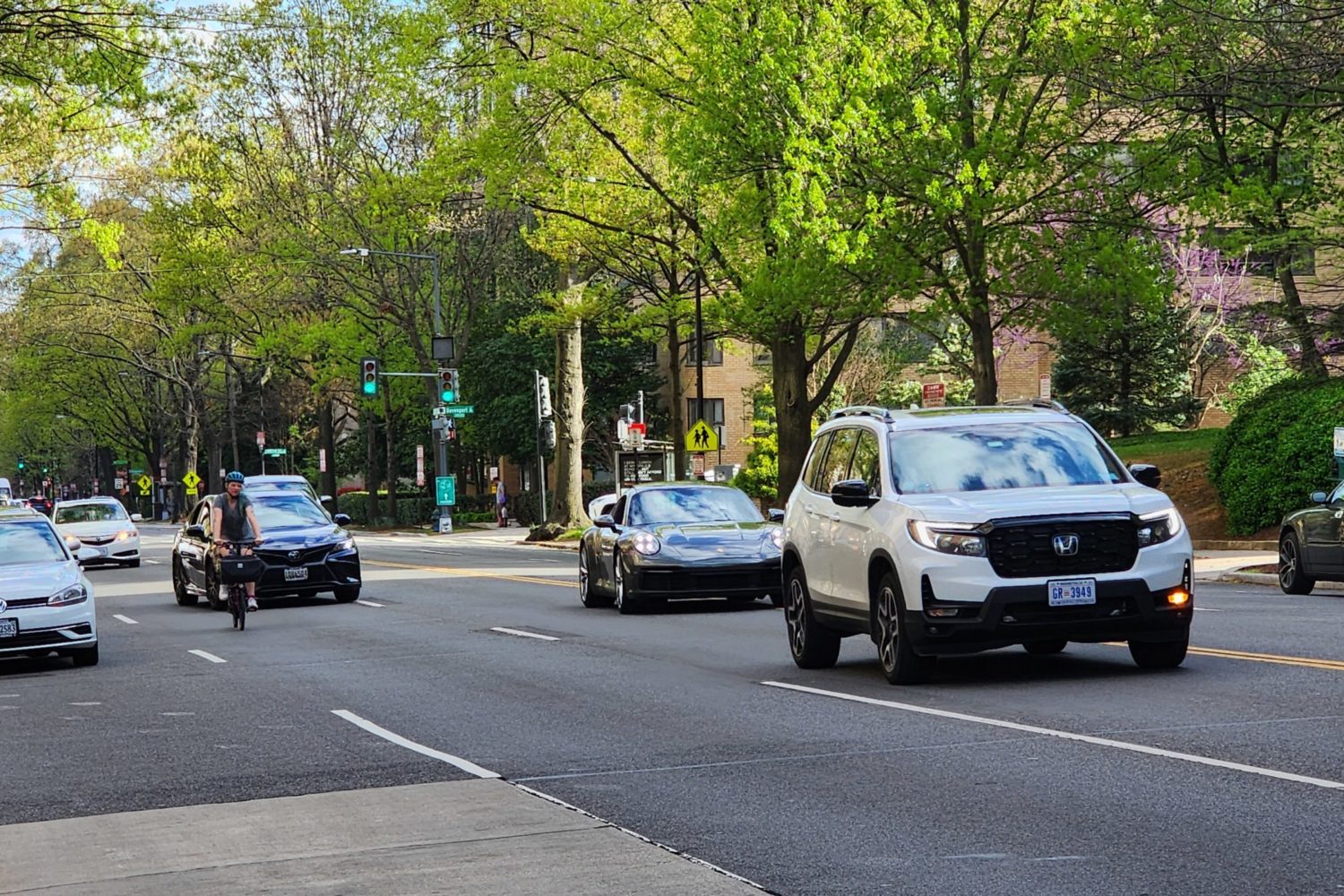In my experience, there is no species more “in the moment” than a toddler, and my three-year-old is no exception. Leo innately understands this concept, narrating everything he sees along the way to school. “Look at that fire,” he says as I push his stroller past a gaslight on 27th Street in Georgetown. “Oh, there’s some ivy,” he continues. “And the bumpy sidewalk.”
Me, I’m thinking about what’s around the corner—literally and figuratively. My mother told me I came out of the womb worrying. One day, my husband asked: “Why can’t you just appreciate what’s right in front of you?” Leo had completed his first outing with his scooter, yet instead of witnessing his grace and balance, I was mapping out a possible trip to the ER.
And that’s why Patricia Anderson is right in front of me. A psychotherapist at DCMindBody in Georgetown, Anderson has kids who go to the same school as Leo, and she has seen me on more than one occasion pleading with him to “hurry up!”
Over coffee one morning, I ask Patti for tips on how to be more present. “Think of this as a practice of savoring every moment,” she says, instructing me to engage my senses and notice everything around me. This habit will engage my parasympathetic nervous system, or the relaxation response.
If my mind wanders, I should say “sound” in my head and go back to savoring the moment. “When you get hooked on thoughts that take you away,” she says, “you can tell yourself, ‘That’s just sound.’”
After Patti leaves, I savor my scone, which is slightly stale. My coffee is now lukewarm, so I allow that to register, too. So far, so good. I eavesdrop on the conversation behind me.
“I’m so jealous of your heels!” says a woman.
“My feet are on fire!” her companion answers.
I remember a short story by Steve Martin called “Cruel Shoes,” in which a woman at a shoe store dismisses everything she tries on until offered a pair with razor blades inside. “I like them!” she cries.
Mentally, I am no longer in the coffee shop. I am in my closet thinking about a pair of shoes that no longer fit, but what if I wore a thicker sock and . . . . “Sound!” I tell myself. “Sound!”
I walk down M Street and take in everything I see: the woman Windexing the windows of BCBG, the curious word Spitalfields on the AllSaints store, the crushed ice in the window of J. Paul’s.
Present-moment me is in a better mood. I make eye contact and smile more. I pop into Alex and Ani and treat myself to a bracelet with a “live in the moment” charm. Its tinkling will be an auditory reminder should my thoughts wander. So far, with all these stimuli, wandering hasn’t been an issue.
Until I walk Leo home from school. As usual, he is totally in the moment. Unfortunately, his moments can last an eternity. What should be a 15-minute walk can take us two hours. At one point, he gets down on his knees to blow leaves across the sidewalk. At another, he stops and contemplates the texture of the P Street Bridge.
When he plops down on a stoop to watch some men change a tire, I sit next to him and breathe deeply. Watching him do nothing makes me anxious. I feel like I’m having a heart attack. “Sound!” I tell myself, tinkling my charm.
“Let’s go!” I say, louder than intended. Unable to take the snail’s pace, I carry a protesting Leo the rest of the way.
Once home, I sob silently against the stove. Present-moment me is a failure. I slowly take things down for dinner. A pot, a strainer, a carton of macaroni and cheese. I force myself to notice how the water sounds as it boils, how the cheese powder leaves a fine coating on the counter when I open the packet.
“Repetition,” Patti urged me that morning. “Your current way of thinking is like an old river following the same path, but creating new ways of thinking requires intention and repetition, much like the energy needed to force a river to change its path.”
“You upset, Mama?” Leo asks as we sit down for dinner. Before I can figure out how to explain my red eyes, he says, “That’s okay. Maybe tomorrow you be happy.”
I don’t know what’s going to happen tomorrow, I think. But if I stop to worry about it, where would I be today?
One Step at a Time
For a primer on mindfulness, psychotherapist Patricia Anderson suggests Thich Nhat Hanh’s Peace Is Every Step. Known as “the gentle Buddhist monk,” he believes happiness is possible only in the present moment and finds Zen in simple acts. “I must confess,” he writes, “it takes me a bit longer to do the dishes, but I live fully in every moment, and I am happy.”
This article appears in the December 2014 issue of Washingtonian.


















